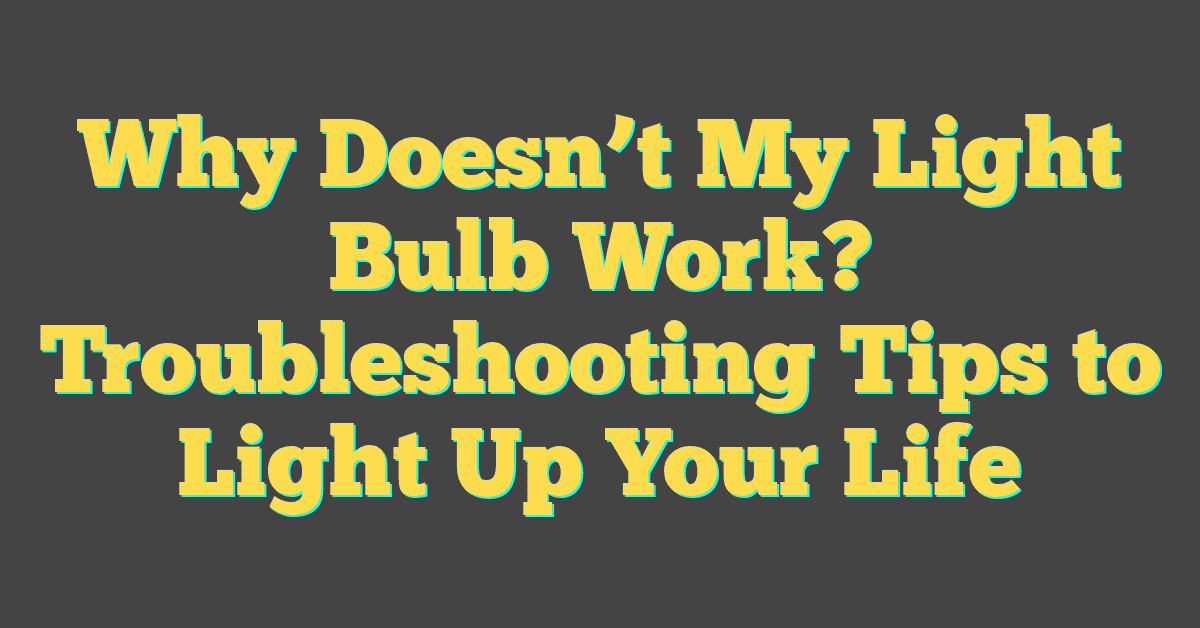Riding through the city at night can be an adventure, but staying visible is a must. I’ve learned that a good bicycle light isn’t just about seeing the road ahead—it’s about making sure others see you too. With busy streets and unpredictable traffic, the right light can make all the difference in keeping your ride safe and stress-free.

Why Bicycle Lights Are Essential For Urban Commuting
Good bicycle lights keep you visible and safe in high-traffic areas. Urban streets are filled with cars, pedestrians, and other cyclists, all competing for limited space. A quality light helps ensure you’re noticed, especially in low-light conditions like early mornings, evenings, or overcast days.
Proper lighting improves your visibility to others. Many urban environments have layered distractions, such as bright signs or dense traffic. Front and rear bicycle lights, like powerful LED headlamps or red taillights, cut through the visual clutter, making it easier for drivers and others to spot you.
Lights help illuminate potential road hazards. Potholes, debris, or uneven pavement can be hard to notice on poorly lit streets. Strong lights allow you to see these dangers in advance, avoiding accidents and damage to your bike.
Using bicycle lights reduces risk at intersections. City intersections often have complex traffic flows with limited visibility. Lights, especially flashing ones, grab attention more effectively, ensuring that turning vehicles, buses, or crossing pedestrians notice your presence.
Most cities require bike lights by law. Beyond safety, legal compliance is another key reason. For example, many places mandate the use of front white lights and rear red lights after dark. Failing to use them might result in fines or reduced legal protection after an incident.
Key Features To Consider When Choosing Bicycle Lights
Selecting the right bicycle lights for urban commuting can make a noticeable difference in both safety and convenience. Here are the key factors I always consider when picking lights for my rides.
Brightness And Lumens
The brightness of a bicycle light, measured in lumens, determines how well it illuminates the path ahead and ensures you’re seen by others. For urban commutes, I go with at least 200 lumens for front lights and 50 lumens for rear lights. Higher lumen counts, such as 400 or more, are useful for poorly lit roads or dense traffic areas. Ensure the light has an adjustable mode for brighter or dimmer settings based on your environment.
Battery Life
Battery life impacts how reliable a light is during long commutes. I pay special attention to runtime specs, ensuring at least 3-5 hours on medium settings for daily use. Rechargeable USB options offer convenience and save money over disposable batteries. I avoid lights with inconsistent battery indicators, as they can leave you stranded mid-ride.
Mounting Options
The mounting system should be secure yet easy to attach and remove. For my urban setup, I prefer quick-release systems, like rubber straps or slide-on brackets, that don’t need tools. Compatibility with handlebar sizes, seat posts, and helmet mounts is important for customizing placement. Look for mounts that minimize vibration, especially if you encounter bumpy city roads.
Water Resistance
Water resistance is non-negotiable because urban commutes often involve unpredictable weather. Most good-quality lights carry an IPX4 rating or higher, meaning they can withstand rain or splashes. I check for sealed ports and durable casings to ensure reliability in wet conditions.
Size And Weight
Compact and lightweight lights are easier to handle and don’t add unnecessary bulk to your bike. For urban commuting, I stick to lights weighing under 150 grams. Smaller designs are perfect for quick mounting and discreet storage in a bag or pocket after parking. Avoid overly bulky options unless you need extreme brightness or extended battery life.
Top 10 Bicycle Lights For Urban Commuting
Urban commuting demands the best gear to ensure visibility, safety, and convenience. I’ve spent years testing bike lights, and here are my top ten picks, each with standout features tailored for city rides.
Light 1: Features, Pros, And Cons
Features
The Cygolite Metro Plus 800 delivers 800 lumens with a rechargeable battery offering up to 90 minutes on high mode. It has six lighting modes, including pulsing for daytime visibility and steady for nighttime use.
Pros
Robust brightness, compact design, and quick-release mounting make it a commuter favorite. Its water-resistant body withstands rain effortlessly.
Cons
« How Do Light Bulbs Send Love Letters? Illuminate Your Affections
How to Choose the Right Front Light for Your Bike: Top Tips for Safe and Bright Night Rides »
The beam spread could be wider, and it doesn’t include a rear light.
Light 2: Features, Pros, And Cons
Features
The Light & Motion Urban 500 offers 500 lumens, IP67 waterproofing, and amber side lights for lateral visibility in traffic. The USB-rechargeable battery runs for 2.5 hours on high.
Pros
Side lighting enhances safety, while the lightweight and easy-to-mount design is perfect for urban use.
Cons
Battery life limits long nighttime rides, and it lacks multiple flash modes.
Light 3: Features, Pros, And Cons
Features
The Bontrager Ion Pro RT provides 1300 lumens, Bluetooth compatibility, and a runtime of up to 6 hours on low. It connects to Bontrager’s mobile app for tracking battery life.
Pros
Incredibly bright, with a wide beam pattern and durable aluminum casing. The app integration is a plus.
Cons
Pricey compared to similar lights and slightly heavier due to its build.
Light 4: Features, Pros, And Cons
Features
The Knog Blinder Road 400 offers 400 lumens from its compact design, weighing just 105 grams. Its IP67 waterproof rating and programmable flash patterns enhance versatility.
Pros
Lightweight, easily pocketable, and perfect for unpredictable urban weather.
Cons
Low max lumen count isn’t ideal for poorly lit areas, and the mounting strap feels less durable.
Light 5: Features, Pros, And Cons
Features
Garmin Varia RTL515 combines a 65-lumen taillight with radar to alert riders of vehicles approaching from behind. Its sleek design integrates seamlessly with most bike setups.
Pros
Innovative radar feature increases safety, and its high visibility is effective both day and night.
Cons
Expensive, with limitations for front lighting options.
Light 6: Features, Pros, And Cons
Features
The CatEye AMPP800 has 800 lumens with five modes, including a wide-angle beam for urban streets. A double-click function jumps straight to high mode when needed.
Pros
User-friendly and versatile for different riding conditions, with a long-lasting rechargeable battery.
Cons
Thicker frame mounting isn’t compatible with all handlebars.
Light 7: Features, Pros, And Cons
Features
Lezyne Lite Drive 600XL offers 600 lumens, an ultra-rugged aluminum body, and seven light modes. Its runtime reaches up to 10 hours in flash mode.
Pros
Compact, durable, and built for extended use. The strap fits securely on most handlebars.
Cons
Beam focus is narrower, making it less ideal for wide-open areas.
Light 8: Features, Pros, And Cons
Features
The Blackburn Dayblazer 1100 brings 1100 lumens, dual LED beams, and micro-USB charging. It’s IP67 waterproof, with a runtime of up to 6 hours on pulsing mode.
Pros
Powerful output and versatile mounting system work in urban traffic and trail environments.
Cons
Slightly bulky and heavier than others in this list.
Light 9: Features, Pros, And Cons
Features
Ravemen CR500 stands out with 500 lumens, anti-glare beam technology, and a runtime of 2.5 hours on high. It uses Type-C charging for faster power-ups.
Pros
Anti-glare design prevents blinding others, and the compact size is ideal for commuting.
Cons
Lower brightness isn’t suited for very dark routes.
Light 10: Features, Pros, And Cons
Features
The NiteRider Lumina 1200 Boost delivers 1200 lumens, a Boost mode for maximum brightness, and a glass lens for better durability. With up to 90 minutes on full power, it’s rechargeable via USB.
Pros
Exceptional brightness and sturdy design stand up to tough commutes. Multiple modes provide flexibility.
Cons
Shorter battery life on high limits its use for longer, high-output rides.
How To Maintain And Extend The Life Of Your Bicycle Light
Proper care keeps your bike light reliable and saves you from unnecessary replacements. Simple maintenance steps ensure optimal performance and longevity.
Keep It Clean
Regular dirt removal prevents grime from reducing light output. Use a damp cloth to wipe the housing and lens after rides, especially in wet or muddy conditions. Avoid harsh chemicals that may damage plastic parts.
Charge Correctly
Follow the manufacturer’s guidelines to avoid overcharging rechargeable batteries. Plug them in only when necessary, and unplug once fully charged. For removable batteries, store them in a cool, dry place to prevent degradation.
Check Mounting Points
Loose mounts can cause misalignment or loss during rides. Inspect and tighten all screws, straps, or clips weekly. Replace worn-out mounts to keep the light secure.
Avoid Water Damage
Even water-resistant lights aren’t immune to prolonged exposure. After heavy rain, dry the light thoroughly, focusing on seams and charging ports. Protect ports with covers when riding in wet weather.
Store In A Safe Spot
Store lights indoors to avoid direct sunlight or freezing temperatures. Extreme conditions can warp plastic or harm internal components.
Test Regularly
Test the light weekly to ensure it’s functioning correctly. Pay attention to dimming or flickering, as these could indicate battery or circuit issues needing repair.
Investing effort in these steps keeps your light dependable for urban commuting. Reliable equipment means less stress and a safer ride for every trip.
Conclusion
Choosing the right bicycle light can make all the difference when it comes to staying safe and confident on urban streets. With so many options out there, it’s worth taking the time to find a light that fits your needs and offers the reliability you can count on.
Whether it’s navigating busy intersections, dodging unexpected hazards, or simply being seen by others, the right lighting setup keeps you visible and protected. Pair that with regular maintenance, and you’ve got a setup that’ll last for many rides to come.
Investing in quality lights isn’t just about safety—it’s about making every ride more enjoyable and stress-free. So, gear up, light up, and enjoy the freedom of cycling through the city, day or night!




